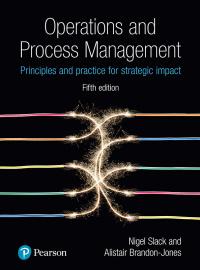5 Think through the following three brief examples. What type of control (according to Figure 10.13 )
Question:
5 Think through the following three brief examples. What type of control (according to Figure 10.13 ) do you think they warrant?
a. The Games Delivery Authority (GDA) was a public body responsible for developing and building the new venues and infrastructure for the ‘International Games’ and their use after the event. The GDA appointed a consortium responsible for the overall programme’s quality, delivery and cost in addition to health and safety, sustainability, equality and diversity targets. The Games Park was a large construction programme, spreading across five separate local government areas, including transport developments, retail areas and local regeneration projects. Sustainability was central to the development. ‘ Sustainability’ was ingrained into our thinking – from the way we planned, built and worked, to the way we play, socialise and travel.’ To ensure they stuck to commitments, the GDA set up an independent body to monitor the project. All potential contractors tendering for parts of the project were aware that a major underlying objective of the Games initiative was regeneration. The Games site was to be built on highly industrialised and contaminated land.
b. The supermarket’s new logistics boss was blunt in his assessment of its radical supply chain implementation.
‘Our rivals have watched in utter disbelief’, he said. ‘Competitors looked on in amazement as we poured millions into implementing new IT systems and replaced 21 depots with a handful of giant automated
’fulfilment factories’. ‘In hindsight, the heavy reliance on automation was a big mistake, especially for fast moving goods’, said the company’s CIO. ‘When a conventional facility goes wrong, you have lots of options.
You have flexibility to deal with issues. When an automated ’fulfilment factory’ goes wrong, frankly, you’re stuck.’ Most damning was the way that the supermarket pressed on with the implementation of the automated facilities before proving that the concept worked at the first major site. ‘I’d have at least proved that one of them worked before building the other three’, he said. ‘Basically, the whole company was committed to doing too much, too fast, trying to implement a seven-year strategy in a three-year timescale.’
c. ‘It’s impossible to overemphasise just how important this launch is to our future’, said the CEO. ‘We have been losing market share for seven quarters straight. However, we have very high hopes for the new XC10 unit.’ And most of the firm’s top management team agreed with her. Clearly the market had been maturing for some time now, and was undoubtedly getting more difficult. New product launches from competitors, had been eroding both market share. Yet competitors’ products, at best, simply matched the firm’s offerings in all benchmark tests. ‘Unless someone comes up with a totally new technology, which is very unlikely, it will be a matter of making marginal improvements in product performance and combing this with well targeted and coordinated marketing. Fortunately, we are good at both of these.
We know this technology, and we know these markets. We are also clear what role the new XC10 should play. It needs to consolidate our market position as the leader in this field, half the slide in market share, and re-establish our customers’ faith in us. Margins, at least in the short term, are less important.’
Step by Step Answer:

Operations And Process Management
ISBN: 9781292176130
5th Edition
Authors: Nigel Slack; Alistair Brandon-Jones





